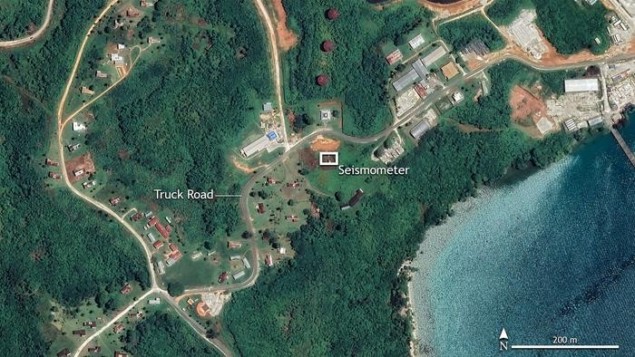
In January 2014 a meteor streaked across the sky above the Western Pacific Ocean. The event was initially linked to a seismic signal that was detected on Papua New Guinea’s Manus Island. This information was used by Harvard University’s Amir Siraj and Avi Loeb to determine where the object likely fell into the ocean. Loeb then led an expedition that recovered spherical objects called spherules from the ocean bottom, which the team claimed to be from the meteor.
Because of the spherule’s unusual elemental composition, the team has suggested that the objects may have come from outside the solar system. What is more, they hinted that the spherules may have an “extraterrestrial technological origin” – that they may have been created by an alien civilization.
Now, however, a study led by scientists at Johns Hopkins University has cast doubt on the connection between the spherules and the 2014 meteor event. They have proposed a very different source for the seismic signal that led Loeb and colleagues to the spherules.
Road rumble
“The signal changed directions over time, exactly matching a road that runs past the seismometer,” says Benjamin Fernando, a planetary seismologist at Johns Hopkins who led this latest research.
“It’s really difficult to take a signal and confirm it is not from something,” explains Fernando. “But what we can do is show that there are lots of signals like this, and show they have all the characteristics we’d expect from a truck and none of the characteristics we’d expect from a meteor.”
That’s right, it was a truck driving past the seismometer, not a meteor.
Discounting the Manus Island seismic data, Fernando and colleagues then used observations from underwater microphones in Australia and Palau to work out where the meteor crashed into the sea. Their location is more than 160 km from where Loeb’s team recovered their samples.
“Whatever was found on the sea floor is totally unrelated to this meteor, regardless of whether it was a natural space rock or a piece of alien spacecraft—even though we strongly suspect that it wasn’t aliens,” Fernando concludes.
He and his colleagues will report their findings next week at the Lunar and Planetary Science Conference in Houston, Texas
- SEO Powered Content & PR Distribution. Get Amplified Today.
- PlatoData.Network Vertical Generative Ai. Empower Yourself. Access Here.
- PlatoAiStream. Web3 Intelligence. Knowledge Amplified. Access Here.
- PlatoESG. Carbon, CleanTech, Energy, Environment, Solar, Waste Management. Access Here.
- PlatoHealth. Biotech and Clinical Trials Intelligence. Access Here.
- Source: https://physicsworld.com/a/seismic-signal-that-pointed-to-alien-technology-was-actually-a-passing-truck/



